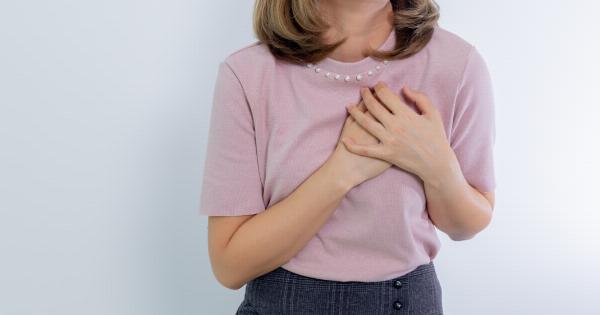Chest pain is a common symptom that can be caused by a variety of underlying conditions.
While heart disease is often the first condition people associate with chest pain, there are many non-cardiac causes of chest pain that can range from mild to severe. Here are 10 potential causes of non-cardiac chest pain:.
1. Pulmonary embolism (PE)
Pulmonary embolism is a blood clot that lodges in the lungs, causing sudden shortness of breath, chest pain, and coughing up of blood.
The pain associated with PE can mimic the symptoms of a heart attack, making it a life-threatening condition that requires immediate medical attention.
2. Pneumonia
Pneumonia is a lung infection that can cause chest pain, along with cough, difficulty breathing, fever, and fatigue. Pneumonia can be caused by bacterial, viral, or fungal infections, and can range from mild to severe.
3. Pulmonary hypertension
Pulmonary hypertension is a type of high blood pressure that affects the arteries in the lungs, making it harder for the lungs to oxygenate blood.
Chest pain associated with pulmonary hypertension can occur during physical activity or exertion and can be accompanied by shortness of breath, fatigue, and swelling of the feet and ankles.
4. Gastroesophageal reflux disease (GERD)
GERD is a digestive disorder in which stomach acid flows back into the esophagus, causing irritation and inflammation.
Chest pain associated with GERD can mimic the symptoms of a heart attack and may be accompanied by acid reflux, difficulty swallowing, and coughing.
5. Panic attacks
Panic attacks are sudden episodes of intense fear or discomfort that can be accompanied by a range of physical symptoms, including chest pain, sweating, trembling, and shortness of breath.
Chest pain associated with panic attacks is often described as a squeezing or pressure-like sensation.
6. Muscle strain or injury
Muscle strain or injury in the chest wall can cause pain that is often localized and worsened by movement. This type of chest pain is typically sharp or stabbing and may be accompanied by tenderness, swelling, or bruising.
7. Costochondritis
Costochondritis is an inflammation of the cartilage that connects the ribs to the breastbone. This condition can cause tenderness and pain in the chest wall that is worsened by deep breaths, coughing, or physical activity.
8. Lung cancer
Although lung cancer is often associated with coughing and difficulty breathing, chest pain can also be a symptom of this disease.
The pain associated with lung cancer can be dull or sharp and is often accompanied by other symptoms such as weight loss, fatigue, and coughing up blood.
9. Shingles
Shingles is a viral infection that can cause a painful rash and blisters on one side of the body. The pain associated with shingles can occur before the rash develops and can be mistaken for chest pain caused by a heart attack.
10. Anxiety disorders
Chronic anxiety can cause chest pain and discomfort, particularly if the anxiety is accompanied by hyperventilation or panic attacks. The pain associated with anxiety is typically described as a pressure or tightness in the chest.





























